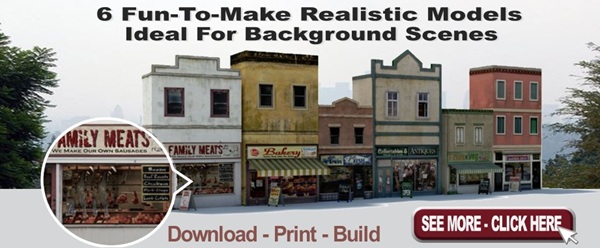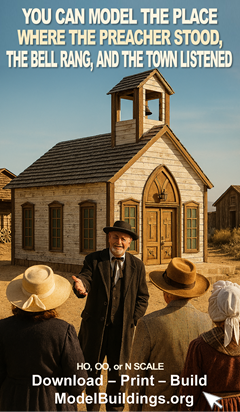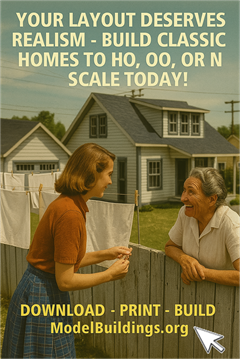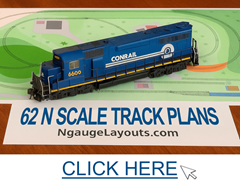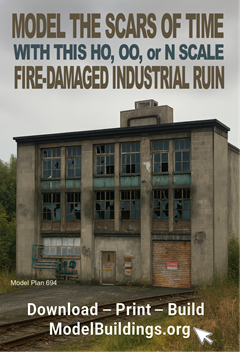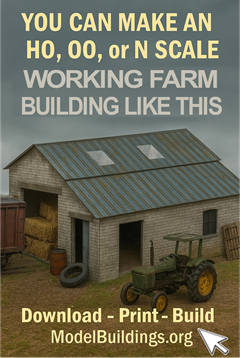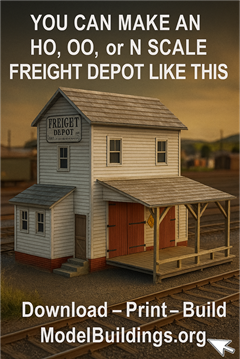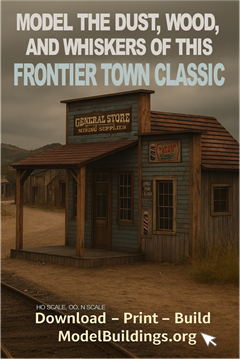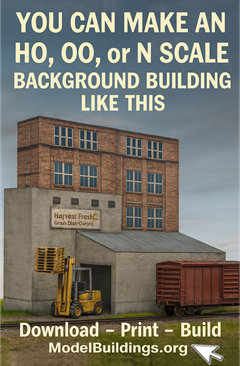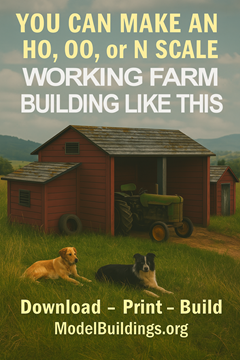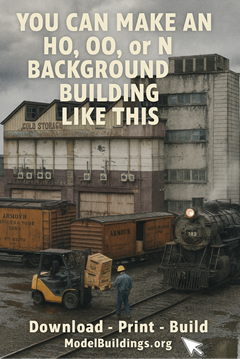Everything on model trains, model railroads, model railways, locomotives, model train layouts, scenery, wiring, DCC and more. Enjoy the world's best hobby... model railroading!
Original Dining Car Orient Express D2419
Peter from South Africa writes:
“Attached is a copy of the dining car D2419 which I wrote about in my recent blog article which I thought the readers would love to see. According to the info it was made by a firm Poco maybe Poland.
This wagon Dining Car started its life as the original dining car for the first Orient Express going back to the early 1900s and when the WW 1 finished the Armistice was signed in her between France, England, and Germany and was mounted at Versailles France. Along came the WW 2 when Hitler signed the WW2 into operation and stolen the dining wagon 2419 D and used it as his command center on his special war command train until the end of the of WW2. Then according to the records this coach was pushed into a tunnel and burnt. The remains were only found later on but the French had an ace up their sleeve and had a similar coach and brought it out and renamed it 2419D and it is in Versailles today as far as I know. This information was obtained from a Video hunting Hitler shown here in South Africa.
Trust this gives you some info on the coach I use her on my 1930’s SAR trains as it color is what they called Imperial brown which blends in with the 1930’s passenger rolling stock of SAR trains
Cheers Peter Field RSA.”
Power to Turntable
Rudy asks:
“I’m interested to install a manual HO turntable. How does power get to the table, and then the track beyond”
Your Layout Photo
If you have a photo of your layout or a model railroading photo or diagram you would like to share – simply send the Blog Moderator a message using the ASK A QUESTION link below, and giving a few details about the photo/diagram you want to send for publication on the blog. We will then be in touch giving you an email address so you can forward it to us. Simple!
Knuckle Couplers – Where From?
Larry models HO and wants to know:
“I don’t know the type or where to buy knuckle couplers for an AHM Burlington 5204D reel car. Any help available?”
Add your comment, or send in your question for publication. See links below.
Best Way To Cut Flextrack
Byron asks:
“What’s the best method for cutting Flextrack?”
Add your comment or suggestion.
Equipment At Work – Sent In By Patrick
Patrick was impressed with this busy scene he snapped at the National Model Train Show in Kansas City back in 2018. Looks like a big magnet attached to that crane. Hopefully, we will get back to the good old days of visiting train shows sometime next year.
Easy To Extend Backdrop Industrial Buildings
Here are plans for some background industries you can easily adapt and/or extend.
Confused With Airbrush Types
Kel posted this question:
“I want to start learning to airbrush and was all set to buy a boxed set with jars. Then I found out there are single action and double action types. Now I’m confused about what to buy. Input wanted if someone knows?”
Track Pin Problem
Hedley models HO and asks:
“I was given a box with various pins and nails, but I’m finding the track pins I’m using bend all the time…well, not all the time, but a lot. Is there a recommended supplier or brand I should use?”
Small Town Ideas
Peter Field from South Africa has kindly offered this follow-up to Keith’s question on planning a small town rural layout.
Peter writes:
“Before I started my present layout I roughly drew up a layout as I stay in a city and we have a historic village some 15kms from I opted to go for the rural scene made a small village with small shops etc and church of course. I also opted for three small businesses/factories and settled for a Furniture factory, a Car maintenance plant, a water house, and a scrap dealer. I made up two farms; one a maize farm, the other a general farm.
My layout is 5.5m x 1.5m wide big enough for me to control. Good Luck. Here are two pictures of the farm and village.”
Thanks for sharing the photos Peter.
Problem Lashing locomotives
Kirk who models O gauge asks:
“I read that you can lash 2 Lionel LionChief locomotives by orienting them in the same direction and using a single remote. I bought 2 BNSF Tier 4 and tried this. Worked well at first but after about 10 different times of running around my 60 ft loop, they started to get jerky. Then they just stopped. I separated them and found one engine would not move. It would light up and rev up but that’s it. Did I do something wrong?”
Isolated Sidings?
Warwick models N gauge and asks:
“So you know I have Kato # 4 points and a passing loop with sidings coming from the loop. Problem is; switching the track to maneuver my engine to the siding causes my other engine on the loop to moves too. Not sure how to isolate the siding? Help for others appreciated.”
16V Track Cleaners
Blain asks:
“Just wondering, would there be any issues using DC 16V AC track cleaners for DCC engines? Would I be best to split the track between DC and DCC?”
Interior Car Lighting DCC
James models HO and posted this question:
“I put some interior lights in a passenger car with 2 wires linked to the left/right metal wheels of the car but nothing seems to work. Would I need to program them for my dcc unit? Advice wanted please.”
Using Cheap Cork Roadbed
 Many rail modelers use cork for their road bed because it is cuts and shapes easily, is lightweight, has a consistent thickness, provides good sound absorption, and is cheap to buy.
Many rail modelers use cork for their road bed because it is cuts and shapes easily, is lightweight, has a consistent thickness, provides good sound absorption, and is cheap to buy.
One option is to buy self-adhesive cork roadbed strips or squares. Another option is to buy Roll Cork, which is available at Walmart, Home Depot, Amazon, and most hardware stores. It typically comes in widths 3ft or 4ft by 3/16″ or 1/4″ thick, and the price varies from about $5/foot.
A sharp craft hobby knife can be used to cut straight edges across the width to slice off strips of cork to the width you want. So, for example, you could cut off one-piece 3/4″ wide which, depending on your scale, might equate roughly to the width of the ties. If you are methodical with your measuring and cutting, you can maximize the number of strips you can cut from the roll of cork, hence making your money go further. Carpenters glue (white or yellow) can be mixed with water and alcohol to glue the cork in place.
If the cork doesn’t extend past the ties, this can allow for a more natural slope for the ballast… if that is the look you want. Be aware that not having the cork separated in two pieces with one laid on each side of the centerline of the tracks can be a little more difficult to position perfectly centered. However, using your craft knife, you can go back and trim away any excess cork to make it flush with the ends of the ties.
You could, if you wanted to, slice the cork pieces to 3/8″ wide so you can tack one piece to each side the centerline of the tracks. Your track will be ready for painting and ballasting.
Obviously, the more strips you can cut from your cork roll, the cheaper the job becomes. You might average around 14 or even 16 strips (3/4-inch wide) from a 12-inch wide piece.
Ideas Wanted For Rural Layout
Keith seeks some suggestions:
“Hi everyone, I am relatively new (4 years) to this and have an unfinished 8.5ft x 5ft layout based around a rural theme. The track is in place with basically two ovals running around the perimeter with a couple of sidings and a passing track. I still have space for more structures (towards the center) and scenery features so am looking for ideas. I already have a small train station, a couple of farm buildings, and a small lumber yard. Just wondering what to add next to bring life and activity to my small-town rural community? Good to get some thoughts.”
